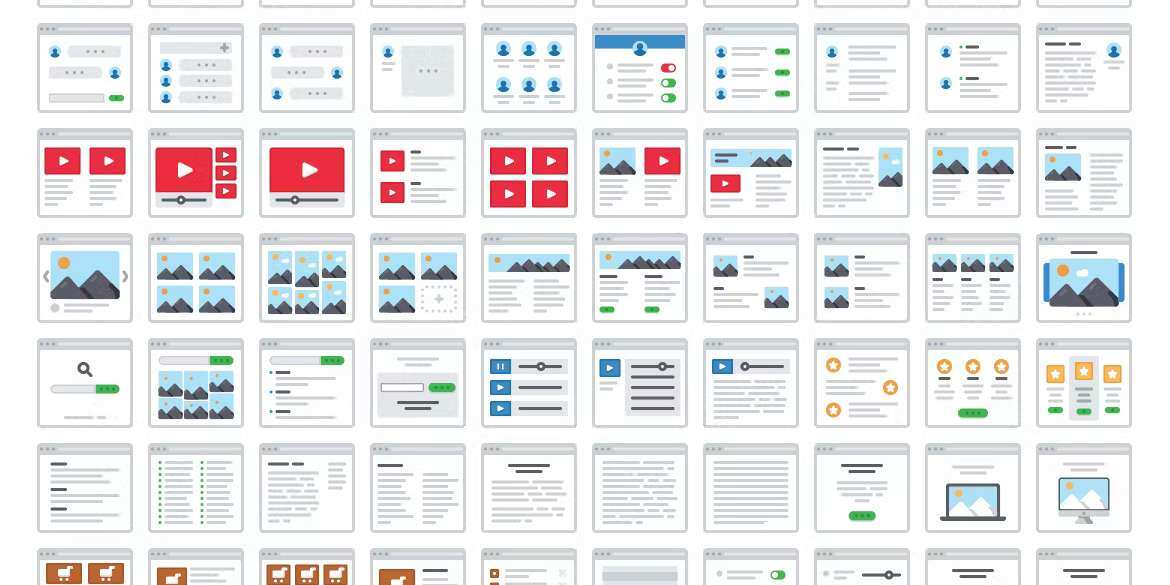According to our research on Reddit, companies face several different challenges as they scale from a start-up through mid-market and into a large corporation or enterprise. For most organisations, an experienced agency partner will deliver bespoke website design. Still, in some cases, and often they are not the best, the internal IT departments decide to take on the job.
Now, the internal IT department in a small business could be the founder or team member working off of a WordPress template or Duda, Shopify, Squarespace or Wix builder - none of which I go near with a barge pole, simply because they are only good for a particular type of business. Typically, one least invested in a website strategy and more interested in a low-cost online presence.
That isn’t who we do business with. Our clients are fully invested in integrated website, marketing and sales strategies (see how we boosted one client's website traffic by 245%), but the information below is still useful to all.
Small business website design services
In the bigger scheme of things, a website strategy at different stages of a company's growth is critical for getting the most out of the investment, but what are the common challenges small businesses and start-ups face?
- Resource constraints: Start-ups often operate with limited budgets and manpower, making it challenging to allocate significant resources to website development
- Identifying market fit: A common challenge for start-ups is finding a problem worth solving or a niche market, which directly influences the purpose and design of their website
- Rapid scaling needs: Websites for start-ups need to be designed for scalability, as the business may grow rapidly. This requires a flexible and scalable web infrastructure
- Brand identity and visibility: Establishing a strong brand identity and gaining visibility in a crowded market is crucial for start-ups. Their websites play a key role in this, often starting from scratch
- Decision on platform: Start-ups face the dilemma of whether to prioritize a mobile app or a website based on their target audience's preferences and behaviours.
Mid-market business website challenges
As companies gain traction, especially those in the business-to-business (B2B) space, the challenges of getting the most out of the website begin to scale. Below, we list the more prominent obstacles and how you can solve them.
- Balancing customization and cost: Mid-market firms may seek a balance between custom website solutions and the cost-effectiveness of platforms like WordPress, which may not fully meet their needs.
- Growth management: As these firms are in a phase of growth, managing the scaling of their website in terms of content, functionality and user load becomes challenging.
- Marketing and sales alignment: Ensuring the website effectively supports marketing and sales efforts can be challenging, especially if there are long buying cycles and complex products or services.
- Talent acquisition: Finding skilled staff to manage and develop the website can be difficult, impacting the ability to maintain and update the site effectively.
- Technology adoption: Mid-market firms might need help adopting new technologies or platforms that could enhance their website's performance due to cost or lack of expertise.
As you can see, while start-ups are more focused on establishing a market presence, brand identity and scalable web infrastructure within resource constraints, mid-market firms deal with challenges related to growth management, balancing customization with cost and aligning their website with broader marketing and sales strategies. Both face technology adoption challenges, but the context and specifics of these challenges can vary significantly.
Enterprise website design challenges
Corporate websites face a variety of challenges, which can be broadly categorized into several key areas:
Content management and flexibility
- Content strategy constraints: Large companies have more complex marketing and content strategies, which may not be well-served by platforms like WordPress, often used by smaller businesses.
- Limited editing capabilities: Corporate websites may use content management systems (CMS) that do not allow marketers to easily change the structure of pages or add new design elements without developer assistance.
Technology and development
- Staying current: Web developers in large organizations find it challenging to keep up with rapidly evolving technologies and trends.
- Custom development needs: Corporate websites often require custom coding and development to meet specific needs, which can be more complex and costly than using standard templates or drag-and-drop builders.
Design and user experience
- Generic design: There is a criticism that many modern websites look generic and prioritize visual appeal over functionality, which can lead to a lack of uniqueness and poor user experience.
Market competition and business strategy
- Increased competition: The web design market is highly competitive, with many free or low-cost tools available, making it difficult for agencies to stand out and choose suitable CMS products.
- Specialization: To remain competitive, web design agencies may need to specialize in specific industries or services rather than offer general web design, which benefits corporations or enterprises and detracts from the right supplier. The RFP process excludes providers based on outdated principles and selection methodology. Typically, from incumbent staff looking for a “named” agency to mitigate the risk of failure.
Client acquisition and retention
- Difficulty in selling services: Web developers and agencies often struggle with selling their services to businesses that may not see the value in a well-designed website or are satisfied with a basic online presence on platforms like social media. In truth, many corporates rely on their “brand presence” over their “web presence” and a conservative web presence over something more creative and suited to the prospect or customer.
- Client education: Educating potential clients about the importance of a professional website and the value it can bring to their business is a significant challenge.
Maintenance and support
- Ongoing maintenance: Corporate websites may require ongoing maintenance, which can be a source of recurring revenue for developers but also requires a commitment to long-term support.
So, corporate websites must navigate complex content strategies, stay abreast of technological advancements, offer unique and functional designs, compete in a crowded market, effectively sell their value proposition to potential clients and receive ongoing maintenance and support.
But all of this is pragmatic and well understood, so what are we missing, and how do we address it?
Bespoke website design
Well, when you see bespoke, you immediately think custom and think, yeah, I want a uniquely designed website for me. That’s the number one issue - websites aren’t supposed to be created for you, EVER!
All business-to-business (B2B) websites have one purpose: to connect website visitors with a product purchase or sales rep. There isn’t another reason other than to match business goals.
Sure, you can say landing pages for webinars and ad campaigns, but that’s a secondary requirement on the basis that it supports your marketing efforts.
When I think about bespoke web design, yes UX, yes customer journey, yes STRATEGY.
Do you think about website strategy?
The bespoke design is easy to understand. Customer journeys cannot be bespoke because they are rarely linear, so a strategy is needed. At BIAS, we offer Growth-Driven Design, a retainer model for web design that incorporates ongoing UX, customer journey, content, SEO and conversion rate optimisation.
Now, that is how you get to bespoke website design. It’s a constant iterative process rather than a one-and-done - and we don’t offer one-and-done website design. I mean, why would you sell a sub-par product even if it is the one that consistently fits the status quo?
That damages our reputation and our longer-term ability to sell, and I’m simply no longer interested in doing anything that won’t deliver incremental conversions month on month.
Looking for website support? Get in touch with the team.




